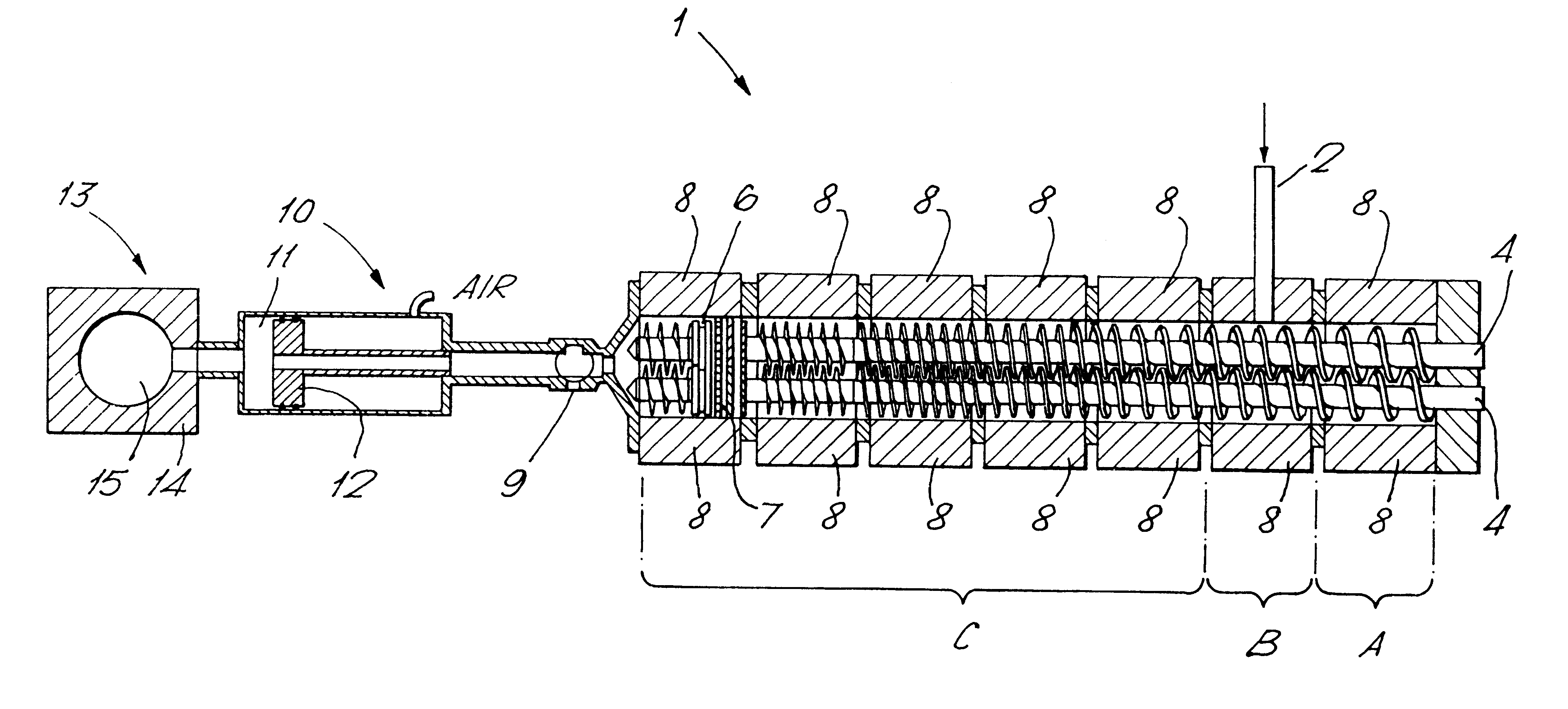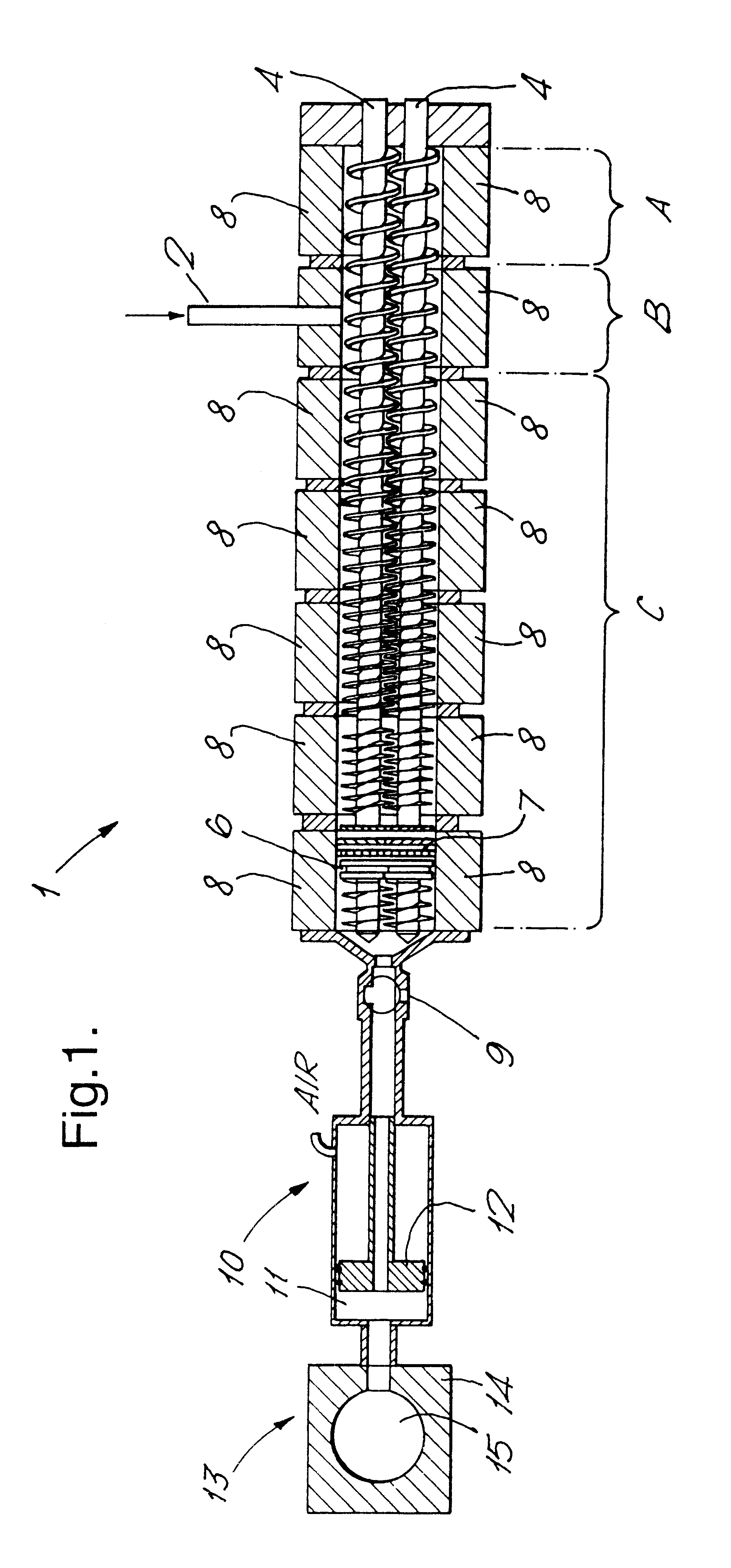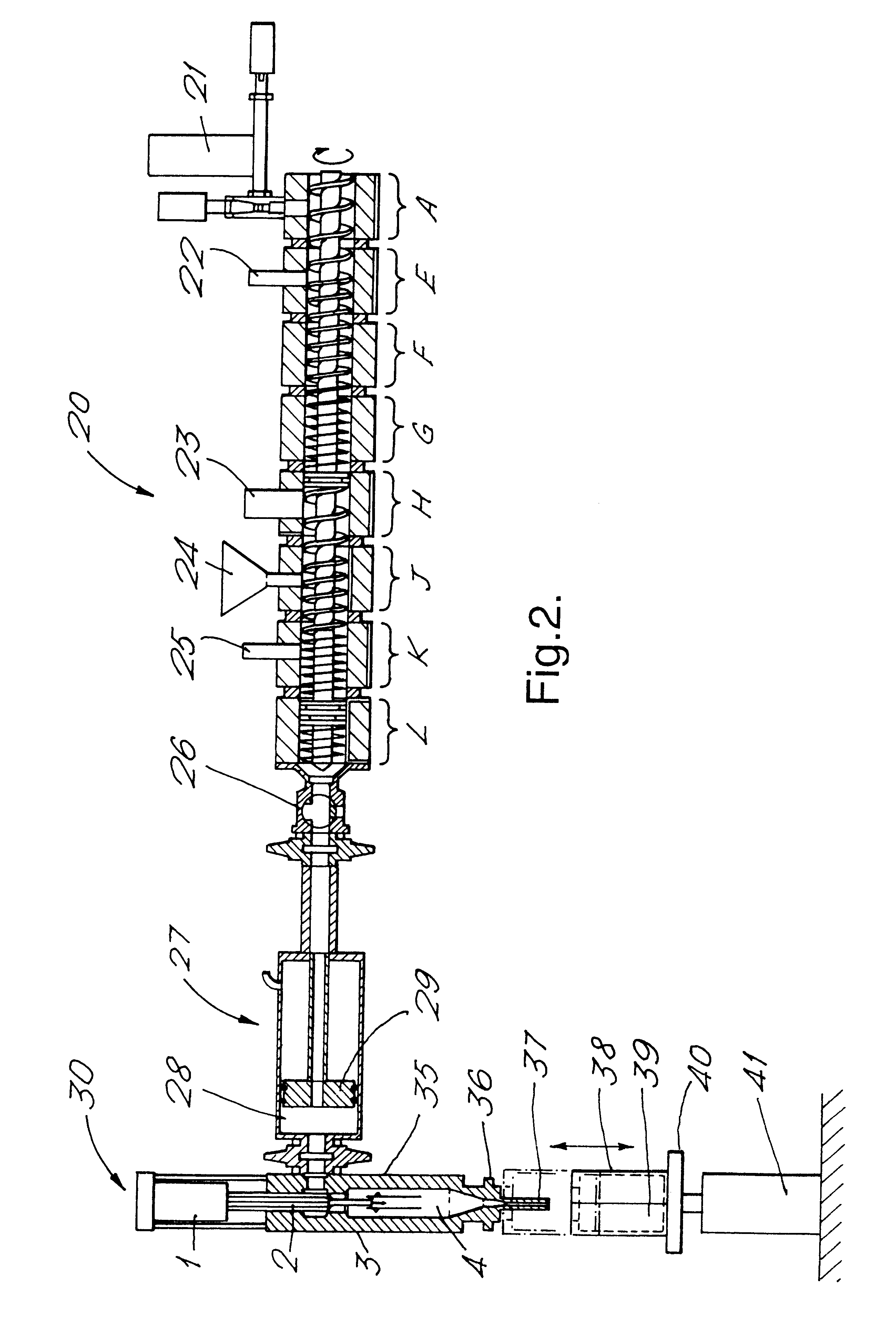Process for the production of a deodorant or antiperspirant product
a technology of antiperspirant and production process, which is applied in the direction of drug compositions, liquid/fluent solid measurement, disinfection, etc., can solve the problems of increasing the overall energy consumption of the process, large volume of molten deodorant, and composition usually remaining in molten state for a long tim
- Summary
- Abstract
- Description
- Claims
- Application Information
AI Technical Summary
Benefits of technology
Problems solved by technology
Method used
Image
Examples
example 1
In Example 1, antiperspirant soft solid product of Formulation A summarised below was prepared employing apparatus according to FIG. 1, a Betol co-rotating twin screw extruder, having 30 mm diameter screws and eight temperature control zones leading via a connection valve to piston-type injection unit in which the connection valve and injection head were also temperature controlled. In this example, the extruder acted to transport the fluid antiperspirant composition to the injection unit.
A batch of a composition within Formulation A was prepared in conventional equipment to produce a solid mass and subsequently melted in a conventional stirred heating-jacketed vessel. It was maintained at a temperature of approximately 65 to 70.degree. C. and fed in the form of a fluid mass via a metering pump into the Betol extruder. Zone A was controlled to about 30.degree. C., in order to generate a solid block of material to minimise loss of the composition. In zone B of the extruder, the tempe...
example 2
In this Example, apparatus in accordance with FIG. 1 and substantially as described in Example 1, was employed to produce soft solid product from a composition within Formulation B. The screw extruder was operated over a range of from 100 to 400 rpm.
The composition was injected into the dispensing containers at a temperature controlled to within the range of 35 to 54.degree. C. The Theological properties of the products were assessed after they had cooled to ambient temperature. It was found that the products had very similar properties at both extremes of temperature of injection employed, showing that the injection moulding system is very tolerant of changes in the temperature of injection. A screw speed of 200 to 400 rpm obtained product having the best rheological properties. All the injection moulded products by the groove test did not suffer from synersesis losses. By comparison it was found that the composition which was produced in the extruder could be filled in a cast tech...
example 3
In this Example, a pre-manufactured composition within Formulation C as shown below was conveyed via a twin screw extruder to an injection unit and injected into a dispensing barrel using the process described below.
In this Example, a product was made employing apparatus according to FIG. 2 and comprising a Werner & Pfleiderer co-rotating twin screw extruder having a plurality of temperature control zones, feeding an injection moulding apparatus having a low shear in-line injection head. The extruder had 30 mm diameter screws rotating at rates controlled within the range 100 to 500 rpm. In this Example, the extruder acted to transport the composition, subject it to low shear mixing and feed it to the injection unit.
The pre-formed mixture was rendered mobile by preheating it to 70.degree. C. and feeding it via a gear pump into segment A. Segment A was controlled at 40.degree. C. and the segments were then progressively cooler until the final segment had the intended temperature for i...
PUM
| Property | Measurement | Unit |
|---|---|---|
| pressure | aaaaa | aaaaa |
| temperature | aaaaa | aaaaa |
| setting temperature | aaaaa | aaaaa |
Abstract
Description
Claims
Application Information
 Login to View More
Login to View More - R&D
- Intellectual Property
- Life Sciences
- Materials
- Tech Scout
- Unparalleled Data Quality
- Higher Quality Content
- 60% Fewer Hallucinations
Browse by: Latest US Patents, China's latest patents, Technical Efficacy Thesaurus, Application Domain, Technology Topic, Popular Technical Reports.
© 2025 PatSnap. All rights reserved.Legal|Privacy policy|Modern Slavery Act Transparency Statement|Sitemap|About US| Contact US: help@patsnap.com



